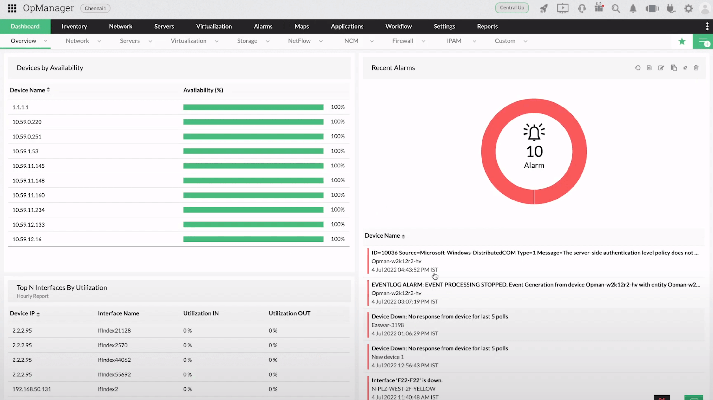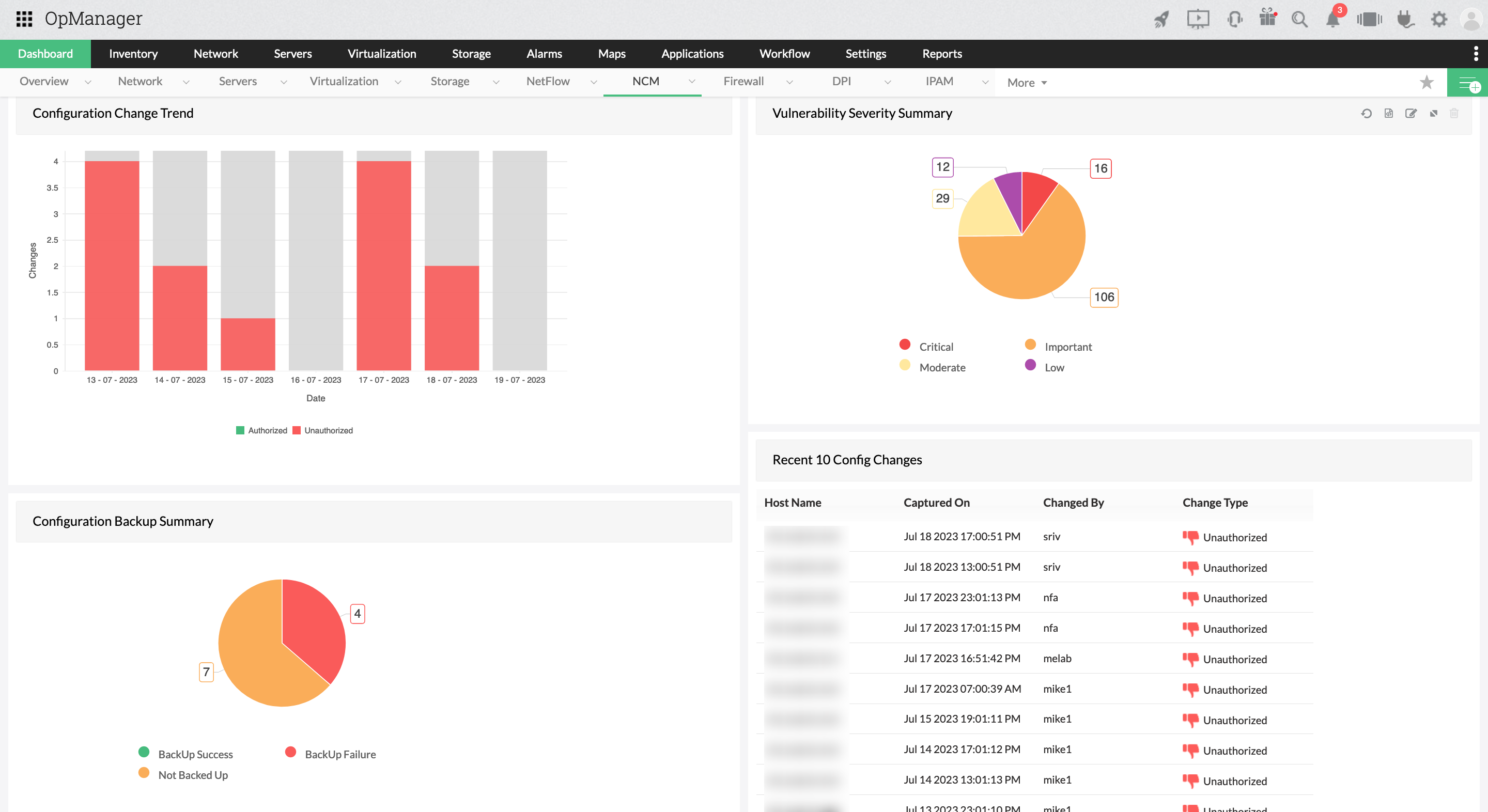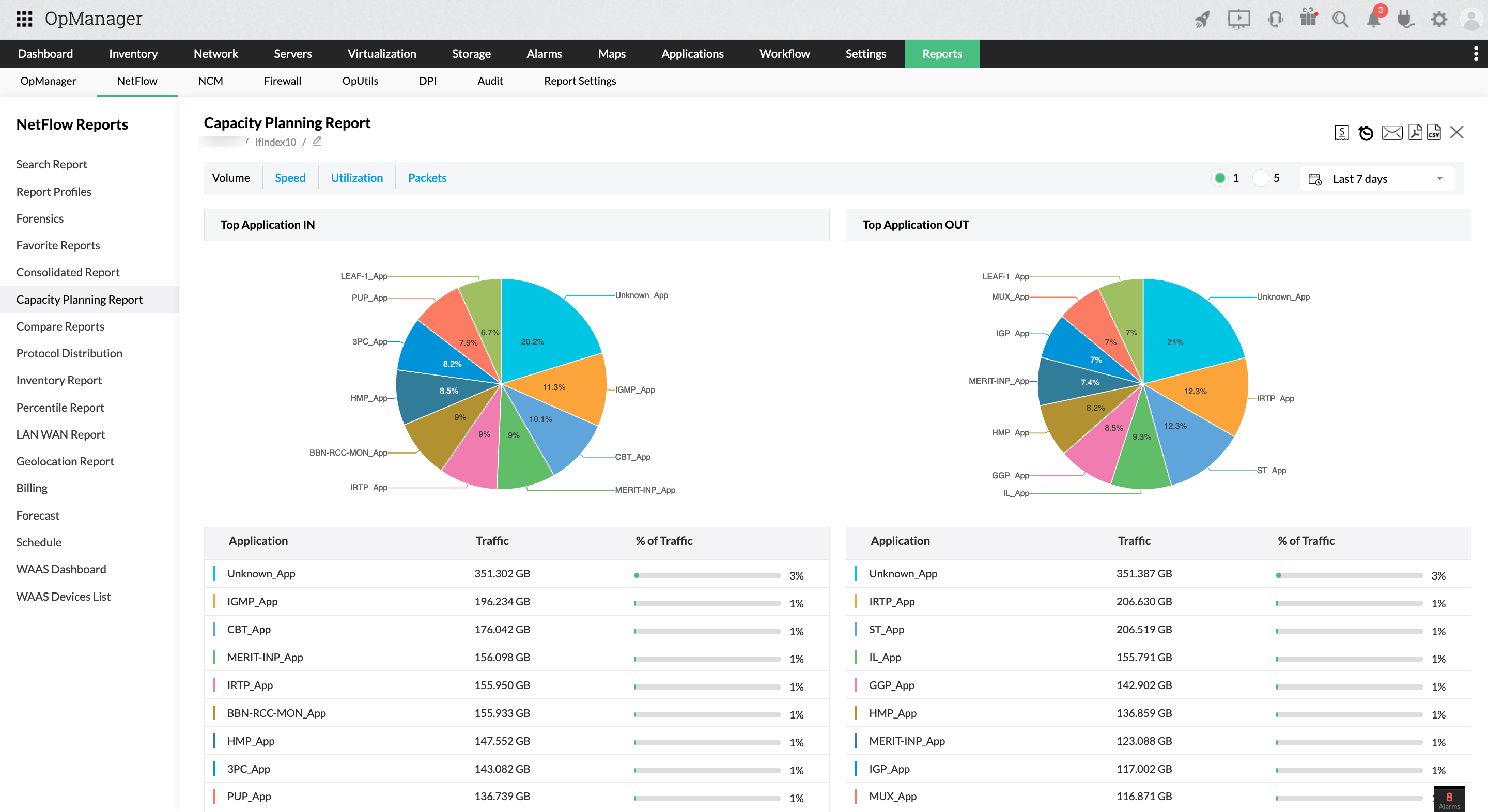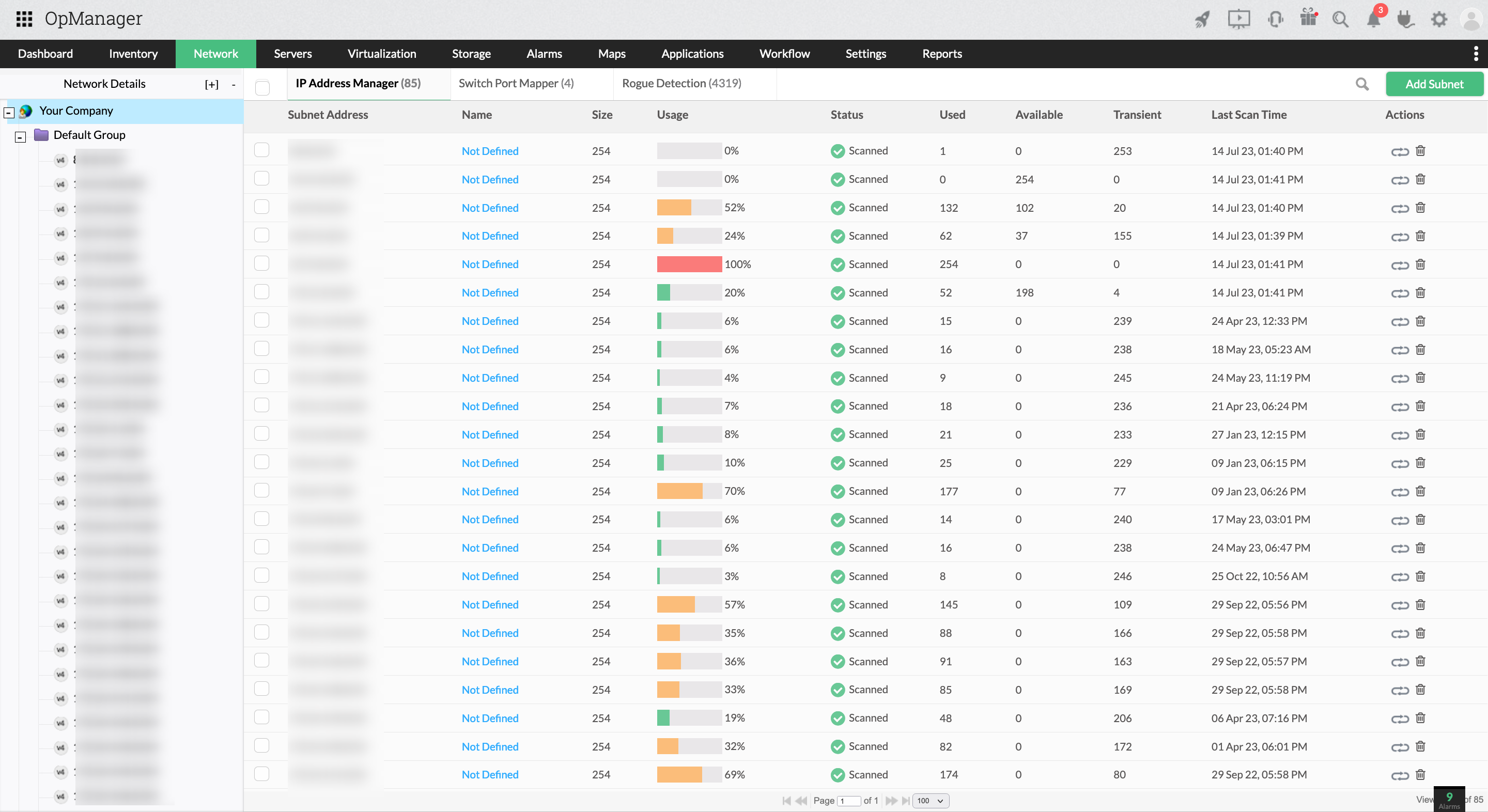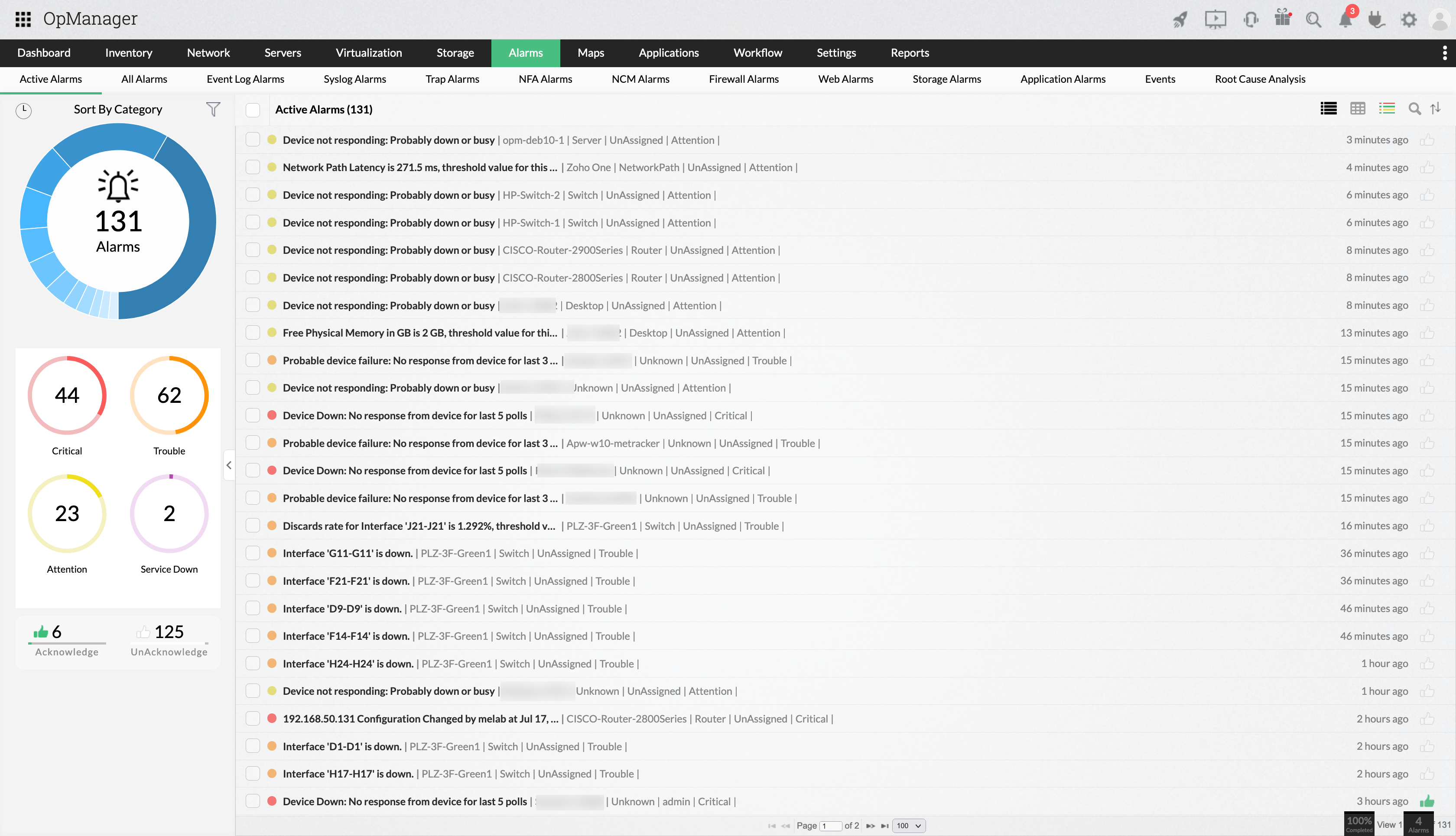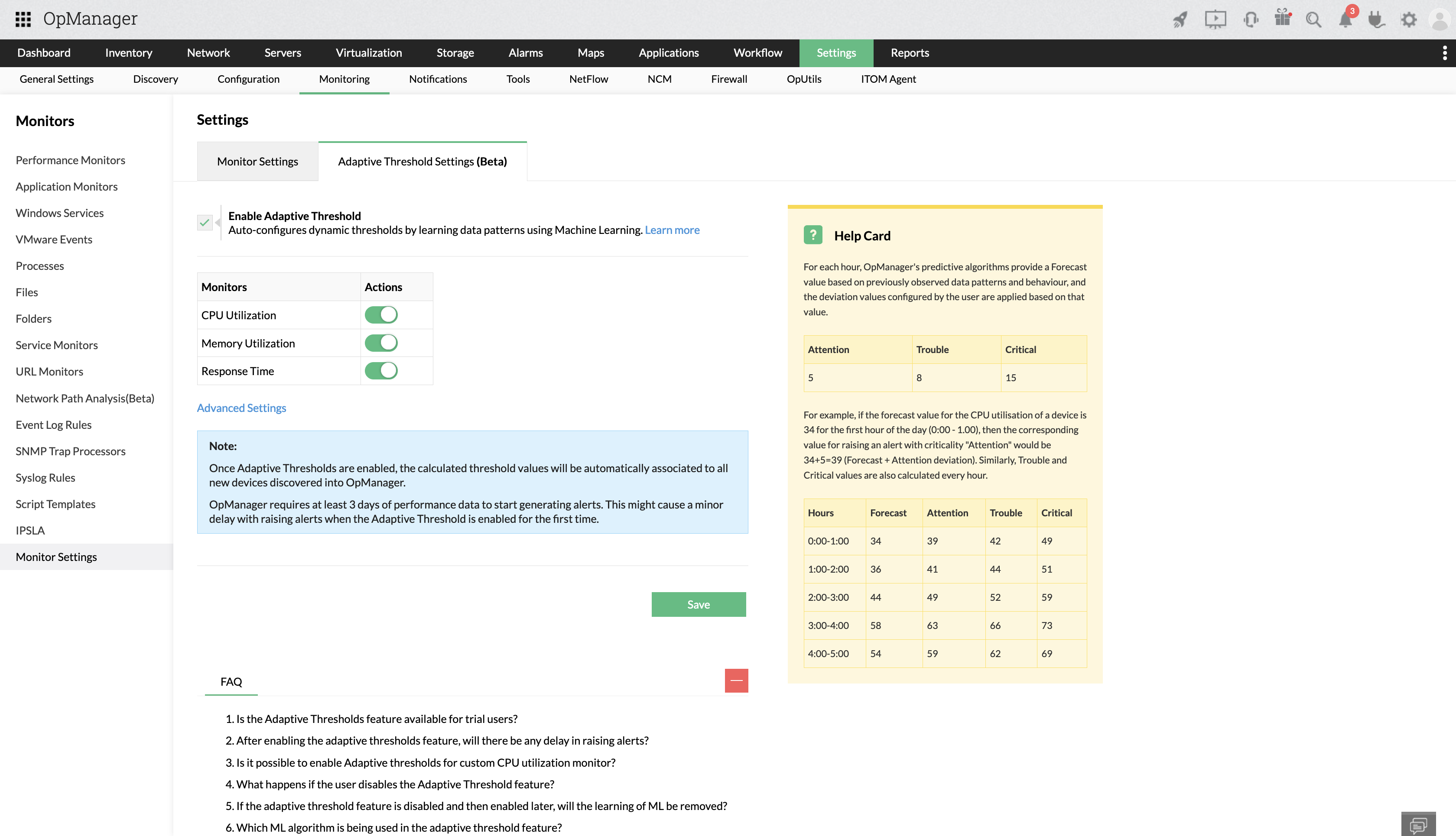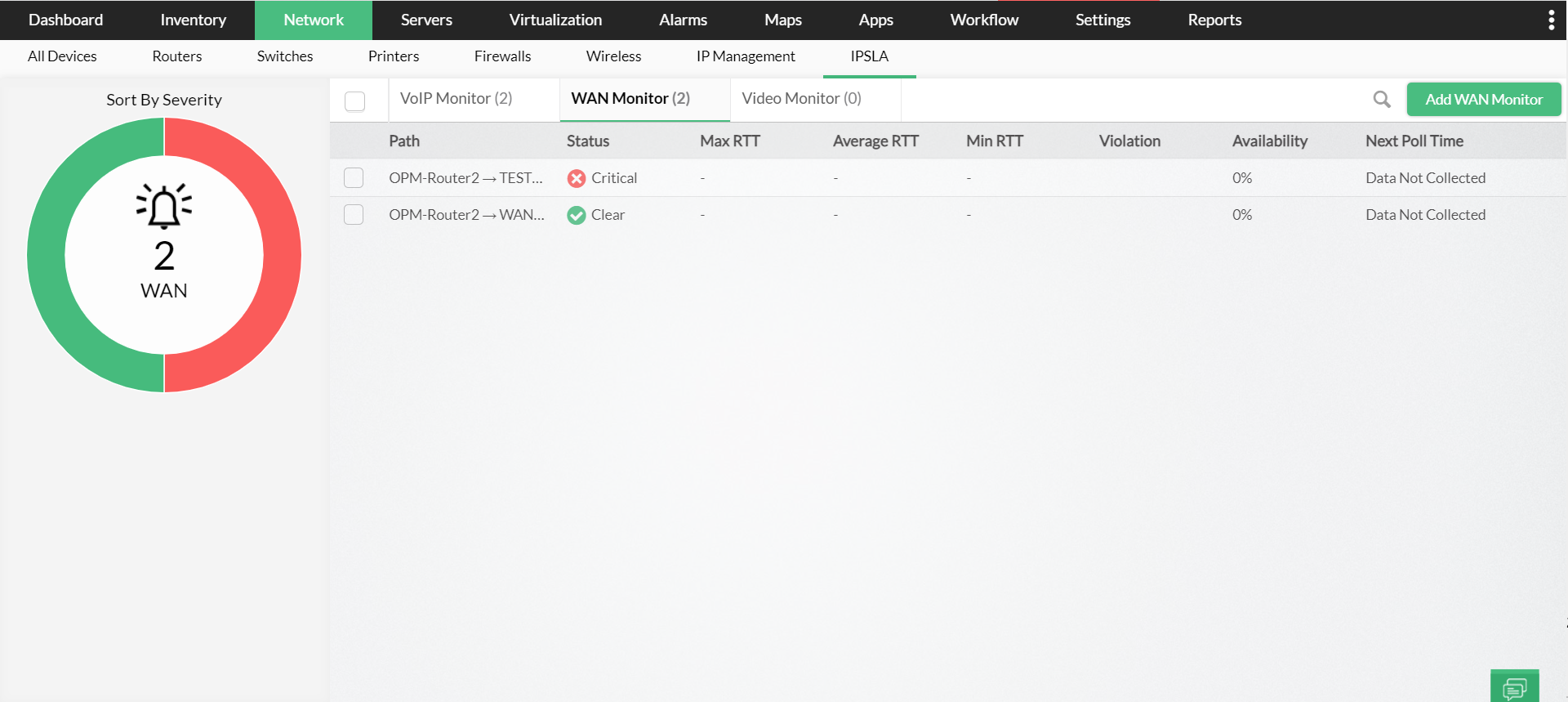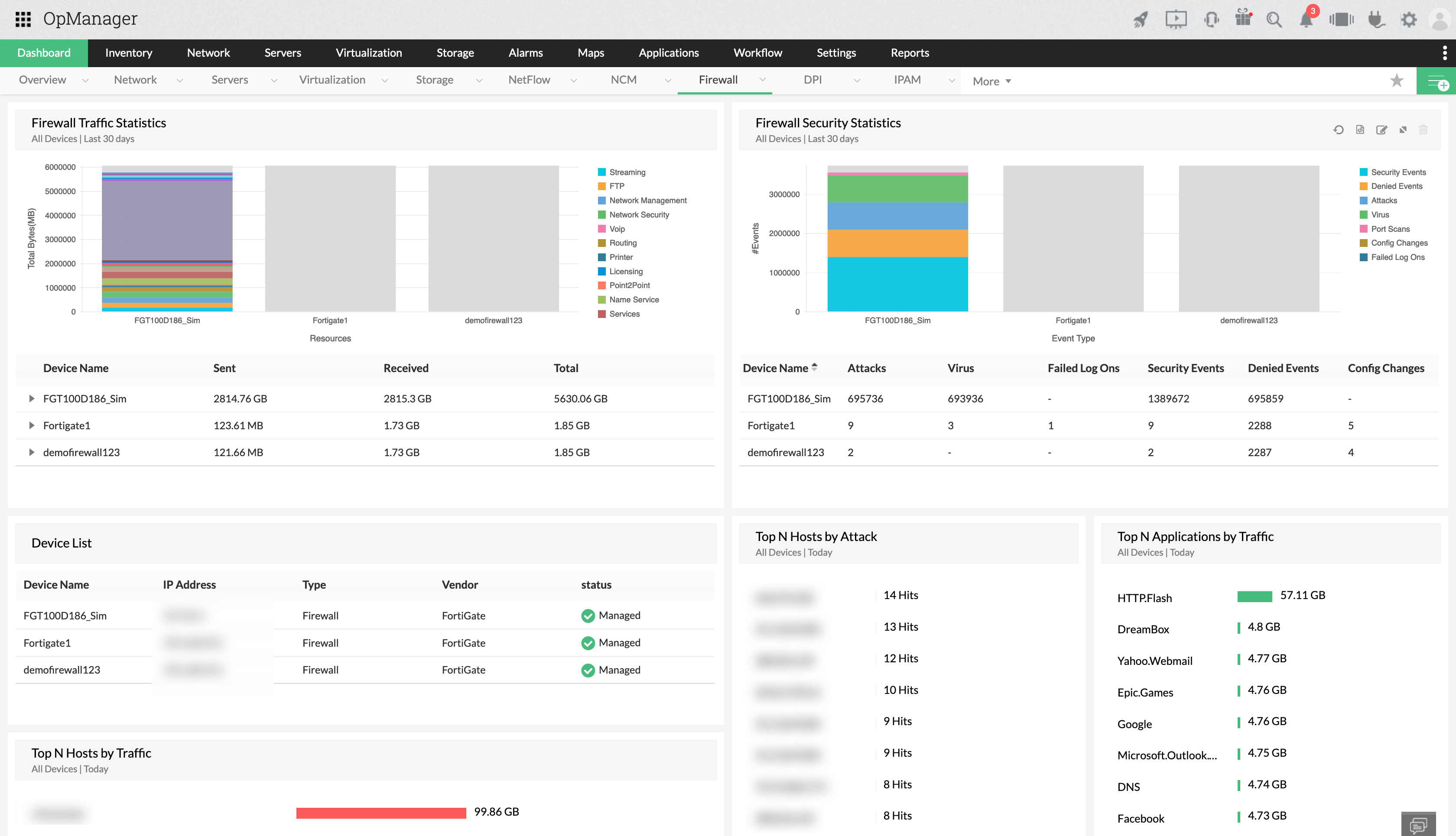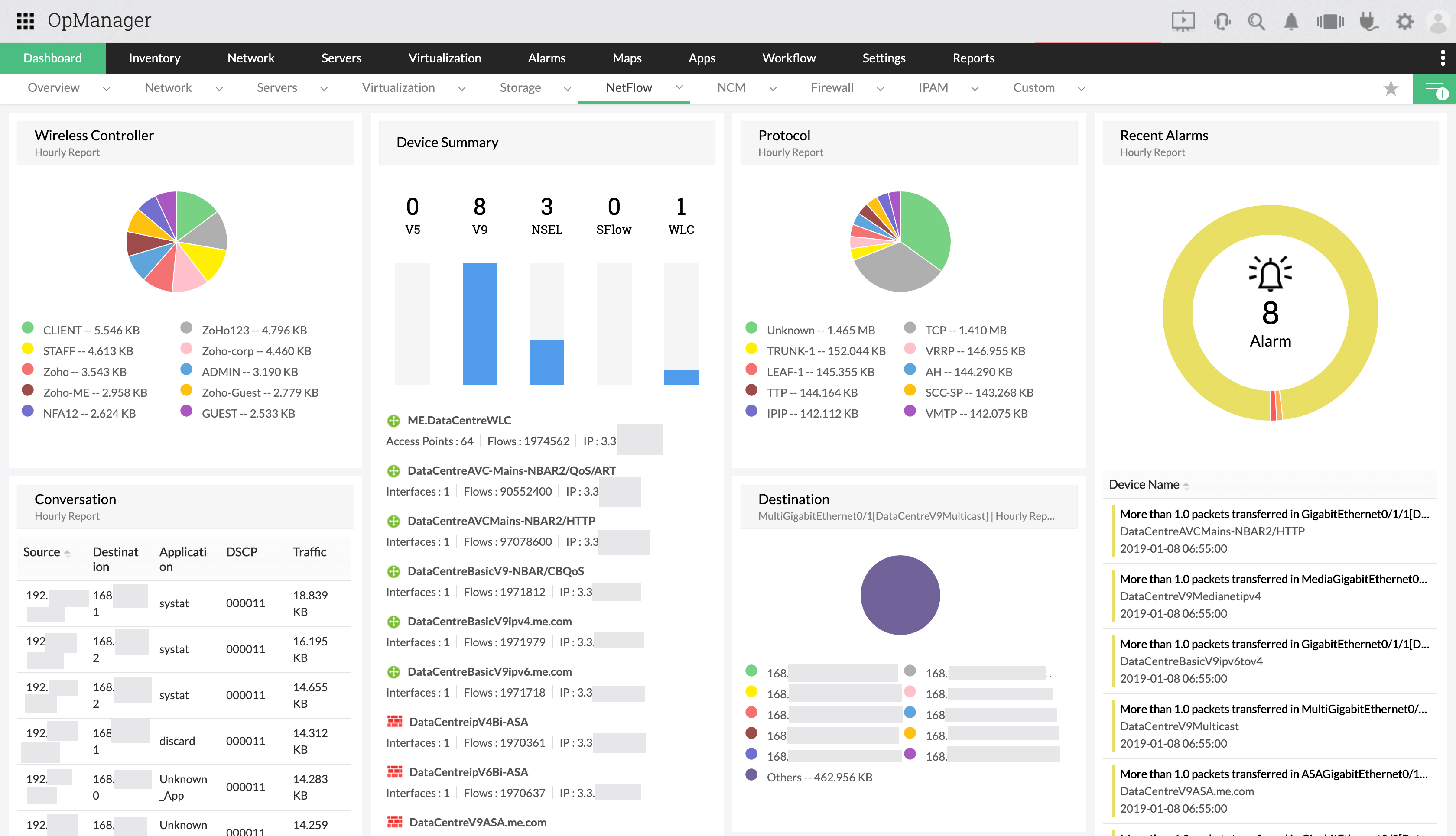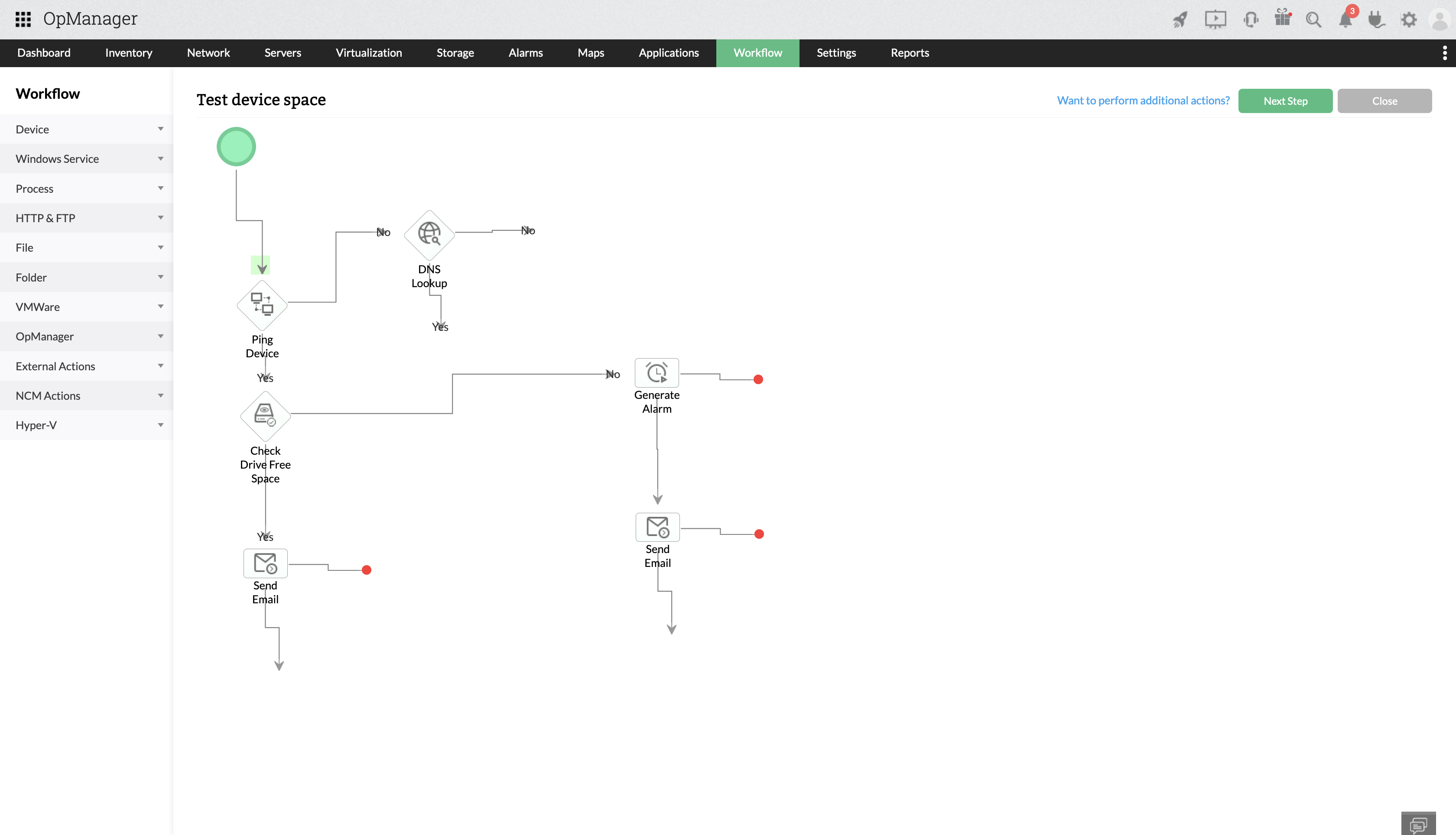Inbuilt tools
OpManager, the network monitoring software, offers a variety of tools such as ping, traceroute, MIB browser, remote control, and more to troubleshoot basic performance issues.
Network Configuration Management
OpManager includes a network configuration management module to manage configuration changes. With this, it is easier to automate configuration backups, adhere to compliance policies, and detect network changes in real time.
Network Assessment Tool
It helps you check if your IT infrastructure is aligned with the business goals and helps in framing a reliable network management strategy. Analyze the top network management tools and you will understand why OpManager stands out matching your expectations.


